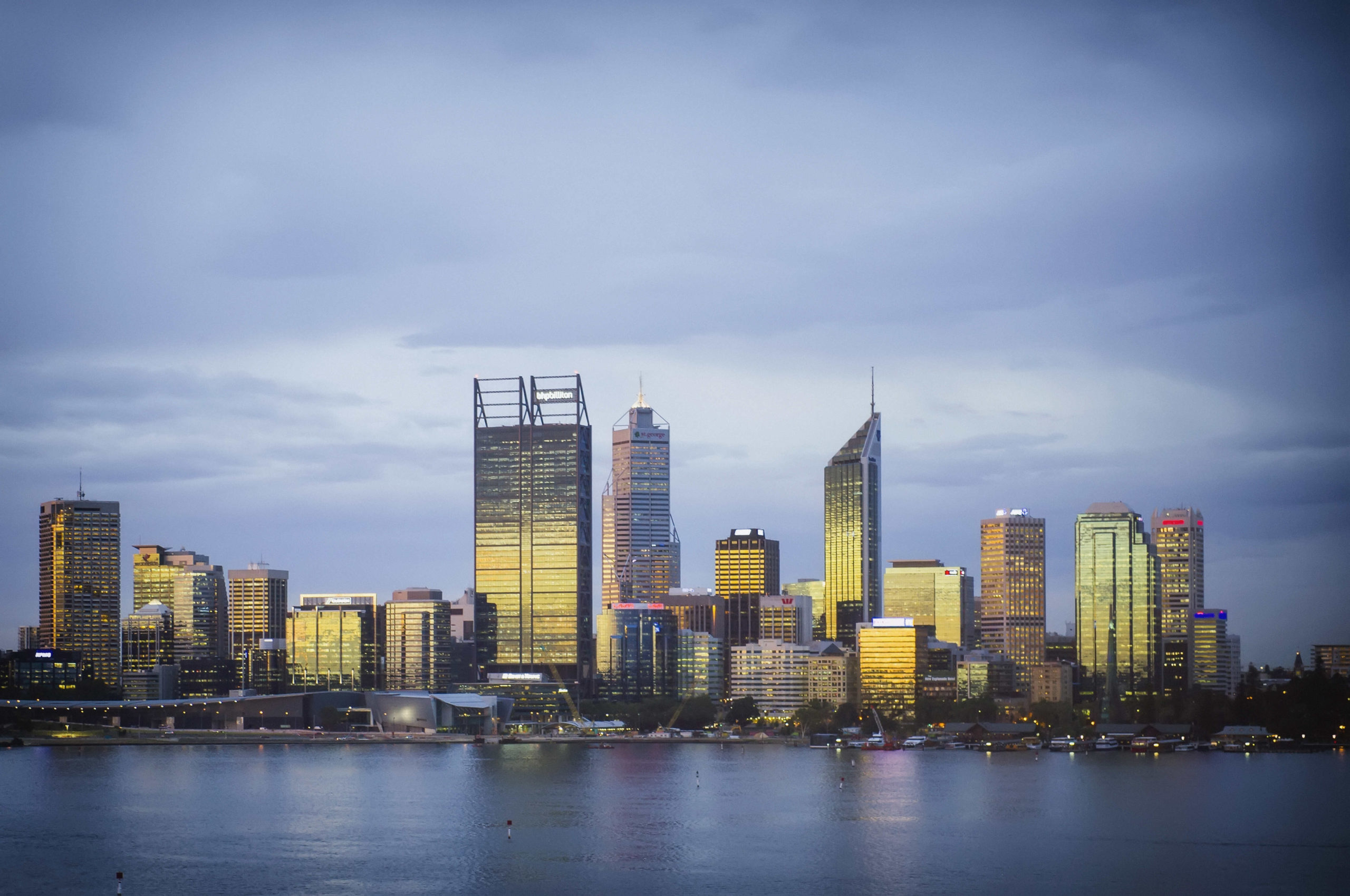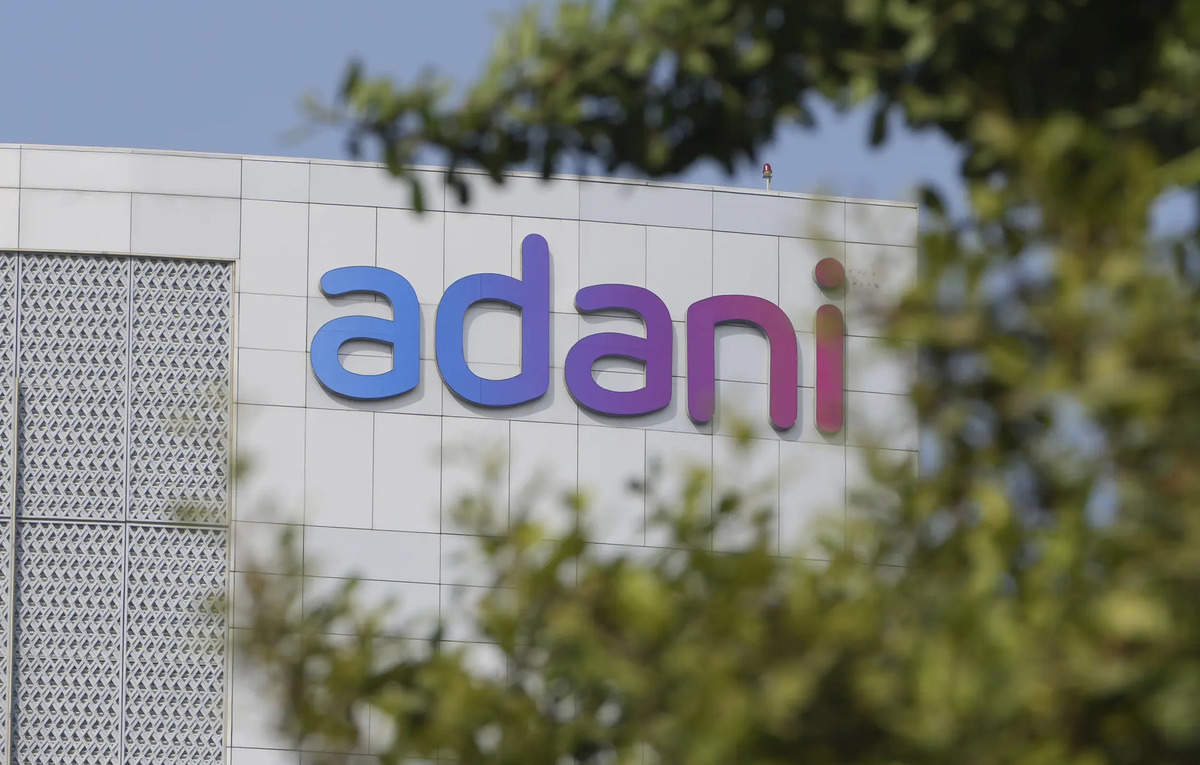Federal Budget 2024-25: infrastructure, strategic transport, net zero – Infrastructure Magazine

- by Admin
- May 15, 2024

The Federal Government has unveiled the 2024-25 Budget which includes investments in infrastructure, strategic transport and net zero efforts, with a focus on responsibly delivering nationally significant, nation-shaping projects for Australia.
The Budget provides $16.5 billion for new and existing projects across Australia over ten years to improve productivity, liveability, and sustainability.
Guided by the priorities of productivity and resilience, liveability and sustainability, the government is investing $4.6 billion in 69 new projects, including:
- $1.9 billion for Western Sydney road and rail infrastructure
- $300 million for METRONET to deliver a capacity signalling program in Western Australia
- $177 million to deliver bridge and intersection upgrades along the Warrego Highway in Queensland
- $80 million to upgrade the Lyell Highway between Granton and New Norfolk in Tasmania
- $120 million for the Princes Highway to deliver interchange upgrades at Mount Barker and Verdun in South Australia
- $50 million to plan for Stage 2B of the Canberra Light Rail
- $12 million for the Bridgewater Road and Portland Ring Road intersection upgrade in Victoria
This also includes $540 million to improve the reliability of the Australian Rail Track Corporation’s interstate freight rail network, including $150 million to upgrade the Maroona to Portland Line in Victoria.
The government is also investing $10.1 billion to ensure current projects can be delivered across the nation, including an additional:
- $3.25 billion for North East Link in Victoria
- $1.4 billion for METRONET projects in Western Australia
- $1.15 billion towards the Direct Sunshine Coast Rail Line in Queensland
- $50 million to ensure the delivery of the existing Appin Road project in New South Wales
- $27.1 million to deliver the duplication of William Hovell Drive in the ACT
As part of the government’s investment in new projects, $158 million is being committed to deliver critical planning for nationally significant projects under the Major Projects Business Case Fund.
The government said that Australians can be confident these projects will be delivered because of the reforms that have already been implemented.
To support the enabling infrastructure needed to drive greater housing supply, this Budget also makes available $1 billion in 2023-24 for states and territories to deliver enabling infrastructure through the Housing Support Program – Priority Works Stream. This investment expands the $500 million already committed through the Housing Support Program.
The Federal Government is also ensuring Australia’s elite athletes have access to the facilities they need to go for gold at the 2032 Brisbane Olympic and Paralympic Games by revitalising the Australian Institute of Sport (AIS).
The Budget has allocated $249.7 million to the AIS to deliver:
- An accessible multi-story accommodation facility
- A multi-sports dome to provide an all-weather, indoor training facility supporting track, field and a range of team sports, with integrated facilities for testing and analysis
- A new High-Performance Training and Testing Centre
Funding will be held in the Contingency Reserve while a detailed business plan for the AIS site redevelopment is finalised.
A further $10 million will fund a Bruce Precinct Master Plan to identify optimal land uses within the precinct, complementing an AIS Master Plan to be developed by the Minister for Sport and the ASC.
The government said that it remains committed to maintaining appropriate infrastructure in the Territories, with $22.5 million provided to maintain and repair critical assets and plan for future projects across the Indian Ocean Territories, Jervis Bay Territory and Norfolk Island.
Addressing housing pressures
This Budget invests a further $6.2 billion in specific housing initiatives, taking the government’s total new investment since 2022 to $32 billion.
This investment expands on initiatives already being delivered through the National Housing Accord, Housing Australia Future Fund and Social Housing Accelerator.
Supporting more homes
The government is making available a further $1 billion to states and territories to deliver new housing – including for connecting essential services such as water, power, sewerage and roads.
This investment expands on the $500 million already committed through the Housing Support Program to support enabling infrastructure to unlock more homes.
More housing for students
To deliver more accommodation for students and to reduce pressure on the private rental market, the government will work with the higher education sector to develop regulations requiring universities to increase their supply of student accommodation.
More housing support for vulnerable Australians
The Budget includes funding for a new five‑year, $9.3 billion National Agreement on Social Housing and Homelessness with states and territories. This represents an increase of $423 million.
Under the agreement, the Federal Government will double its dedicated funding for homelessness services to $400 million a year – funding that states and territories must match.
The government is targeting the $1 billion increase to the National Housing Infrastructure Facility to better support housing for women and children experiencing domestic violence and for youth. The funding is being rebalanced to provide more up‑front grants to support states and territories and community housing providers to deliver more housing for these cohorts.
Net zero
Following extensive consultation, legislation for the New Vehicle Efficiency Standard for light vehicles was introduced to Parliament in March. This reform will ensure Australian motorists are able to save money at the bowser and choose from a wider range of more fuel efficient, modern vehicles that are cheaper to run.
The government has said that it will provide $84.5 million over five years to help establish the scheme, a regulator and facilitate credit trading between manufacturers.
As part of the Future Made in Australia plan, the government will fast-track support for a low-carbon liquid fuel industry, with an initial focus on sustainable aviation fuel and renewable diesel to support emissions reduction in the aviation, heavy vehicle, rail and maritime sectors.
This investment is set to help move the transport sector towards net zero and create new jobs and industry across Australia, and includes:
- $18.5 million over four years from 2024-25 to develop a certification scheme for low-carbon liquid fuels, including Sustainable Aviation Fuels and renewable diesel, in the transport sector by expanding the Guarantee of Origin scheme
- $1.5 million over two years from 2024-25 to undertake a regulatory impact analysis of the costs and benefits of introducing mandates or other demand-side measures for low carbon liquid fuels
- Investing $1.7 billion over the next decade in the Future Made in Australia Innovation Fund, to support the Australian Renewable Energy Agency to commercialise net zero innovations including low-carbon liquid fuels
- The government will be undertaking targeted consultation to identify options for production incentives to support the establishment of a made in Australia low carbon liquid fuel industry
Strategic transport capability
As part of this Budget, the Federal Government is advancing its election commitment for an Australian-flagged and crewed maritime strategic fleet.
The strategic fleet will be established through a pilot program with three vessels. Applications to participate in the pilot will open later in 2024 with the first vessels expected to be operational as quickly as possible. The strategic fleet will provide Australia with additional capability to respond to disasters and disruption.
The Remote Airstrip Upgrade Program will be extended with an additional $50 million over three years, to improve safety of remote airstrips and accessibility for people with disability.
The Regional Airports Program will be extended with an additional $40 million in competitive grant funding over three years from 2024-25.
The government will also provide $500,000 in funding per year to the Remote Aerodrome Inspection Programme, to provide critical inspection services to ensure safety of remote airport operations. The program supports First Nations community aerodromes safety, and allows the Royal Flying Doctor Service and others to safely land in remote communities.
The Aviation White Paper process established how important these programs are to regional and remote communities and that is why the government has announced these additional investments.
To further enhance aviation safety, the Federal Government will provide $3.6 million over three years from 2024-25 to extend and expand the Automatic Dependent Surveillance Broadcast (ADS-B) rebate program, supporting general and recreational aviation operators to install ADS-B devices in their aircraft, bringing about improved airspace management and safety.
The government has said that it will have more reforms to aviation to announce when the White Paper process concludes in late 2024.
The government is also providing $3.9 million in 2024-25 to support the ongoing safety investigative functions of the Australian Transport Safety Bureau.
Increasing road safety and productivity
Funding has increased substantially for the Roads to Recovery Program, progressively rising from $500 million to $1 billion per year and funding under the Black Spot Program will increase from the current commitment of $110 million to $150 million per year.
To ease the administrative burden on applicants, the government has merged the Heavy Vehicle Safety and Productivity Program, and the Bridges Renewal Program into a new Safer Local Roads and Infrastructure Program with at least $200 million available each year.
Road safety is a collective responsibility and driver education is an important part of this.
The Federal Government is providing $10.8 million in 2024-25 for a one-year National Road Safety Education and awareness campaign, and $21.2 million over six years from 2024-25 to improve the reporting of national road safety data via the National Road Safety Data Hub.
This Data Hub will ensure vital and more harmonised road-safety data can be used effectively by everyone, including decision makers in all states and territories.
$100 million will be invested in a new Active Transport Fund open to states and territories which will ensure people who want to walk and cycle in their local community can do so safely, funding new and upgraded bicycle and walking paths across the country.
Industry response
Infrastructure Partnerships Australia Chief Executive, Adrian Dwyer, said that Federal Government infrastructure funding is now at $60.5 billion over the four years to 2027-28, $1.8 billion – or three per cent – lower than 2023’s total.
“This allocation represents 1.92 per cent of total general government spending, with this Budget’s four-year spend being $9.6 billion above the infrastructure expenditure long-term trend of 1.61 per cent of general government expenditure,” Mr Dwyer said.
“The headline infrastructure funding figures look healthy, but the lion’s share flows to existing commitments, with limited funding for new projects.
“With successive budgets focused on tail funding for existing commitments, the infrastructure funding valley is now all but inevitable – the question is how deep the valley goes and how long it lasts.”
Australian Constructors Association CEO, Jon Davies, said that the construction industry is a ‘hard to abate’ sector and while electrification is the preferred decarbonisation pathway, technology constraints mean this will not be available in the short to medium term.
“These announcements will help ensure low carbon liquid fuels bridge the gap until electric options mature and renewable diesel is the best way to achieve this in the construction industry,” Mr Davies said.
“Renewable diesel enables necessary emission reductions in the short term without modifications to existing machinery.
“A domestic renewable diesel industry will have a range of additional benefits beyond construction decarbonisation, including lower air pollutants and better air quality, energy security, local employment and economic growth from both feedstock and refining.”
Australian Railway Association CEO, Caroline Wilkie, said that the Federal Government’s decision to invest $540 million in upgrading critical sections of the 8,500km national rail network will help ensure the safe, reliable and efficient delivery of large volumes of containerised products (including refrigerated food and essential household items) and bulk commodities like grain, minerals, and steel across the country.
“This announcement recognises the critical role rail plays in supporting a strong national supply chain and the great economic and environmental benefits of having a more reliable and resilient network, and getting more freight onto rail,” Ms Wilkie said.
“The 2024-25 Budget has also confirmed an overall investment in nationally significant rail projects of $13.2 billion over the next four years through the Infrastructure Investment Program.
“As part of the large investment pipeline, the ARA also welcomes the Federal Government’s additional investment of $1.4 billion towards the 72km Metronet project in Perth, $1.15 billion towards the Direct Sunshine Coast Rail Line in Queensland, and $50 million towards designing Stage 2B of the Canberra light rail.”
Australian Rail Track Corporation CEO and Managing Director, Wayne Johnson, said that the freight and logistics task in Australia is rapidly growing; and rail is central to supporting the national objective to transport large volumes of goods and commodities efficiently to market to help increase economic productivity and growth with a reduced emissions footprint.
“Targeted and strategic investments along key sections of ARTC’s network will have a measurable impact on the ability of the national supply chain to withstand and recover quicker to the challenges of extreme and intense weather events,” Mr Johnson said.
“The commitment by the Federal Government, coupled with ARTC’s investment, will deliver outcomes that will improve the network’s resilience, reliability, and therefore overall operational performance.
Freight on Rail Group (FORG) Chair and Aurizon Managing Director and CEO, Andrew Harding, said that this is a welcome investment in improving the resilience, reliability and competitiveness of interstate rail freight services which are vital for a healthy, growing Australian economy.
“Improving the resilience of interstate rail infrastructure is a key priority of the Freight on Rail Group,” Mr Harding said.
“More efficient and reliable rail freight supply chains are good for the economy because they enable increased investment by rail freight operators and customers to increase volumes on rail, and they also deliver community, safety and environmental benefits.
”As Australia moves rapidly to decarbonise transport supply chains, rail freight can do the heavy lifting for the nation because it is substantially more energy efficient and less carbon intensive than road transport.
“Flooding and high rainfall events have resulted in a number of significant outages to infrastructure in recent years. For example, on the east-west corridor between Sydney/Melbourne and Perth we have seen outages due to flooding averaging 40 days per year over the last three years.
“Given the importance of reducing the impacts from future weather events, FORG also supports the timely implementation of the infrastructure projects that will improve interstate rail freight resilience.”
Master Builders Australia CEO, Denita Wawn, said that as it walks an economic tightrope, the Federal Budget has made positive steps towards boosting housing supply, but it can’t falter mid-way.
“To ensure the industry can build the 1.2 million new homes under the Housing Accord, government ministers must sing from the same hymn sheet and focus all efforts on boosting housing supply,” Ms Wawn said.
“Building enough homes for Australians requires action beyond the housing portfolio and needs skills, migration, infrastructure, industrial relations, defence, social services, and industry portfolios to pull in the same direction.
“The housing crisis has been decades in the making with a number of portfolios working at cross-purposes and thwarting the industry’s capacity to build enough homes.
“We must reduce the time it takes to build and minimise increasing construction cost blow outs in infrastructure, commercial and housing projects.
“There is still a long way to go, and Master Builders will work closely with the government to ensure the industry has the capacity and support to build for Australia’s future and continue to deliver strong economic growth for the country.”
Housing Industry Association (HIA) Managing Director, Jocelyn Martin, said that this Budget includes a key measure in the continuation of financial incentives for employers to take on an apprentice.
“Without an employer, there is no apprentice and the financial incentives that have been in place have proved invaluable to helping the construction industry to access more workers,” Ms Martin said.
“HIA sought the continuation of these incentives. The shortage of skilled trades remains more acute than at any time prior to the pandemic and is a barrier to increasing supply of new homes.
“The Federal Government’s $11.3 billion Homes for Australia Plan and commitment of $90.6 million to support fee-free training for apprentices, pre-apprenticeships and skills assessments for overseas workers, will assist in addressing the shortage of skilled trades people and increasing supply.
“The boost to investment in more social, affordable and community housing alongside infrastructure and skills funding boosts is another contribution to increasing the supply of homes.
“The $1 billion towards unlocking key infrastructure delivery by states and territories including water, electricity, sewer infrastructure is an important step to unlocking land for new homes.
“HIA has called on the government to double its infrastructure funding for states and local councils to enable them to get homes shovel ready faster, so it is pleasing to see this included in the budget.”
Image: DavidWebb/shutterstock.com
The Latest News
-
December 25, 2024‘Stops riots outside the Members Stand’: Aussie skipper backs cult hero for big MCG return
-
December 25, 2024Sam Konstas is the right player at the right time for Australia. Here’s why
-
December 25, 2024Christmas at the ‘G! Aussie stars and family lap up big day
-
December 25, 2024‘They’re the idiots who picked me’: Aussie skipper’s hilarious message to relieve pressure on new opening sensation
-
December 25, 2024Boxing Day NFL on Netflix: What time is Mariah Carey performing in Australia? | Sporting News Australia





